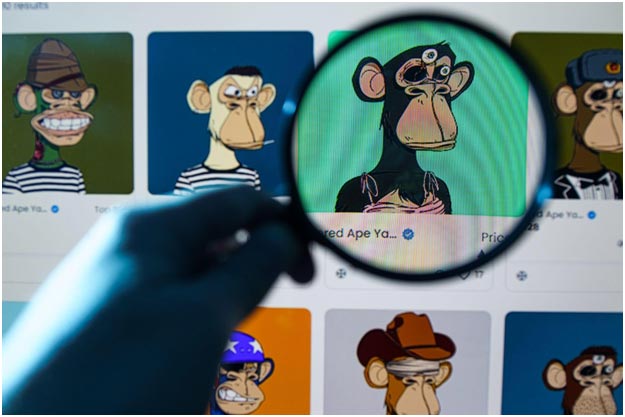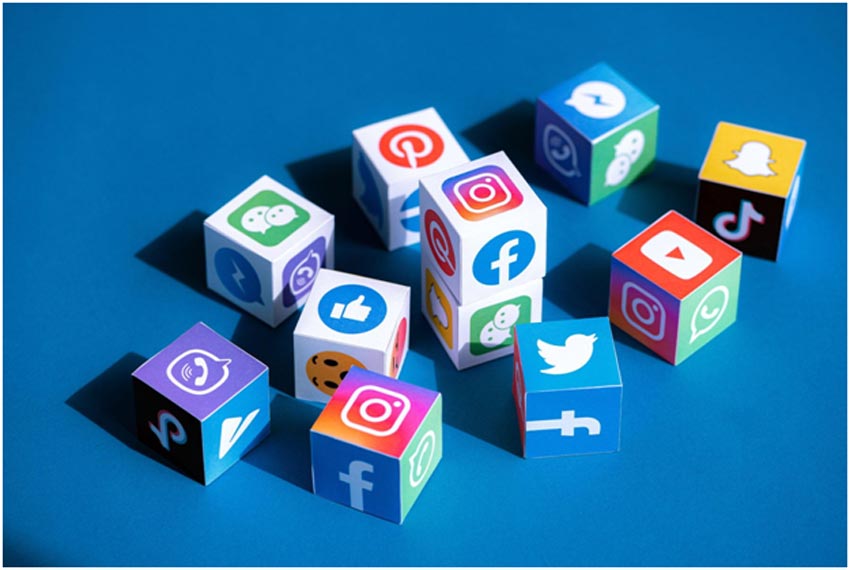It’s that time again. Social media managers everywhere are blinking our eyes and poking our heads out from behind our screens to take the lay of the land. We’ve got strategies to plan, and we need to know: which social media trends are going to change the game in 2024? Is TikTok going to overtake Instagram? Is organic engagement any better? Is it necessary to host a live audio chat once a week? It can be tough working in an industry that morphs faster than a Power Ranger. But, don’t worry, we’re here to save you a bunch of late nights because we have answers.
Social Media Trends That You Need to Know
You Can Also Read: A Complete Guide for Crafting Brand Style
Our society has been greatly influenced by social media. In fact, according to research, 86 percent of the US population utilizes social media on a regular basis. (The Manifest, 2018).
This simply goes to demonstrate how crucial it is for businesses to have a strong social media presence. With 4.2 billion active social media users worldwide, it makes sense for businesses to use social media platforms to reach their target audience.
Taking use of social media, on the other hand, is not straightforward. Simply having a Facebook page, a YouTube channel, or a Twitter account does not guarantee that clients will flock to you. Furthermore, these platforms and the ways in which they are used are constantly changing, making it difficult for businesses to stay current. You should also stay up with what's new in the market so you can figure out how to use these platforms to your advantage. Without further ado, here are today's most important social media trends:
1. NFTs and Digital Currencies
You've undoubtedly heard of concepts like block chain, Bitcoin, and, more recently, NFTs if you've been following the tech headlines lately. Artists and collectors alike have been drawn to reports involving multi-million USD bidding for digital assets. But really what exactly are these so-called NFTs? And how do they function? Let's start with a review of some of the main phrases and concepts we'll be utilizing. We need some background knowledge to understand what NFTs are and how they function.

A token that is not fungible is referred to as a "non-fungible token." That probably doesn't mean anything right now; the phrase 'fungible' isn't used very often. However, it implies that everything may be replaced. In economics, money is an example of a fungible asset. It is split into units that may be easily traded without losing or gaining value (for example, a $20 for two $10s). Fungible assets include gold, bitcoins, and equities, to name a few.
NFTs are digital information units that are stored on the blockchain. Every non-fungible coin acts as an authentication certificate, proving that a virtual currency is distinctive and cannot be exchanged. An NFT could never be edited, altered, or stolen because of the cryptographic ideas that make the blockchain unique.
Even if social media sites were to cease to exist, the sale of NFTs would not be affected technically. To assist the selling of NFTs, several online platforms and markets have arisen, including MakersPlace, SuperRare, and WazirX in the United States. But, without social media platforms, would it be the same? Certainly not. For example, digital art has grown and thrived on social media, and several artists have a sizable or at least sizable social media following. There really is no improved or speedier way of reaching out towards the public and advise them around an NFT proposition, establishing an auction, or proclaiming the sale than through social media.
Physical paintings in exhibitions have been supplanted by digital art NFTs displayed on social media. Furthermore, the artist is free to work around the show, join a waitlist, or be "famous enough"; they may do it on their own terms. Social media is also used by NFT markets to quote a price and publish a CTA with links to purchase an NFT. The captions are intended to describe the artwork or to inform viewers about the artist's work and biography, as well as to provide a visual reference that shows a preview of the artwork.
In the same way that social media links a customer to a brand, it acts as a common ground between a buyer, seller, or intermediary for the sale of NFTs. While no actual elements to facilitate the sale exist, and purchases can only be completed after being sent to an external platform, the area is being investigated.
2. Social Commerce
Social commerce capabilities are popping up on a variety of platforms, opening up new possibilities for both big and small businesses. The epidemic put even more burden on traditional companies. Executives are now fully committed to digital transformation. The purchasing and selling of products or services directly within a social media platform is known as social commerce. This plan goes further than social media's normal purpose in exploration by enabling users to conclude the entire shopping experience sans abandoning their preferred programs.

According to The State of Social Media Investment Report, executives unanimously believe that social commerce is driving a growing share of their company's marketing-driven income. Within the next three years, around eight out of ten people anticipate to offer their products or services using social media. In the middle of the epidemic, Facebook, Instagram, and Pinterest announced redesigned social commerce features in 2020 to assist companies streamline online buying experiences. These capabilities enable the creation of new digital stores that may be discovered naturally or via paid advertising.
Over time, social media has changed. What began as social networking and photo-sharing sites has evolved into critical marketing channels. Companies are investing substantially to attract the estimated 295 million users on social media platforms (including Facebook and Instagram) in the United States in 2021.
Businesses in the United States spent $40 billion on social media advertising in 2020, and that figure is predicted to rise to $57 billion by 2022. Influencer marketing cost about $4 billion this year, and is expected to cost $4.14 billion next year.
Businesses may now utilize social media to raise brand recognition and introduce new items. As social media platforms grow in popularity and incorporate more addictive features, their influence will grow, and social commerce will become more prevalent. According to Statista, income from social commerce will reach roughly $46 billion in 2022, up from $37 billion this year. Statista also predicts that in 2022, there will be 302 million social media users in the United States, with that figure expected to rise to 323 million by 2026.
The way businesses and customers engage has changed dramatically as a result of social media, and social commerce is the latest frontier. It's now or never to be adaptive and embrace change. The sooner you start experimenting with social commerce, the faster you'll be able to scale.
3. AR/VR
Gaming, marketing, e-commerce, education, and a number of other businesses all stand to benefit from virtual reality (VR) and augmented reality (AR). Both technologies are known for enhancing the user experience by combining the virtual and real worlds with improved 3-D pictures. Although the two are sometimes mistaken, there are several key distinctions between them.

Augmented reality is more efficient as a brand and gaming platform than virtual reality since it can be accessed by almost everyone with a smartphone. By delivering virtual graphics and characters through a cellphone screen or video player, AR turns the dull, real world into a colorful, visual one. The user's real-life experience is simply enhanced with augmented reality. Virtual reality takes these elements to the next level by creating a completely computer-generated recreation of a different environment. Immersive simulations may recreate almost any picture or location for the participant using particular technologies such as computers, sensors, headphones, and gloves.
In 2021, 35% of marketers planned to use augmented reality or virtual reality in their campaigns. In 2022, 42% of those marketers want to raise their investment. In addition, 9 percent of marketers who didn't use AR or VR in 2021 will do so for the first time in 2022.
Viewing a computer-generated, lifelike situation is what virtual reality is all about. Viewing the actual environment with visual, haptic, olfactory, or visual enhancements is known as augmented reality. Although virtual reality and augmented reality provide distinct experiences, both are making waves in the marketing world today. Virtual reality and augmented reality are being utilized to enhance and improve customer experiences both online and at events. Due to the high cost of equipment and large headsets, marketers have been sluggish to adopt this trend. However, as virtual reality glasses and augmented reality applications become more widely available, businesses may anticipate to use this technology into their marketing strategies.
Takeaway...
The year 2024 is the year of the 'now' customer for brands. In 2024, you must place customers at the center of every piece of content, plan, or campaign if you want to thrive. The underlying key to success, as evidenced in the patterns we've detailed in this paper, is connection. Customer demands may be high, but that only means the opportunities are even greater. Brands that prioritize consumer intelligence in their 2024 strategy will be the ones to define and seize the year ahead.
Author
Miguel Davao is a graduate of literature and linguistics and has been writing content for about 5 years now. He particularly writes content on eCommerce, design, photo-editing tools, and content writing tips.
Currently, he works as a full-time writer at Removal.AI – a fast-growing start-up that offers image processing and AI Background remover for marketing, web, and app development, and marketing automation.
